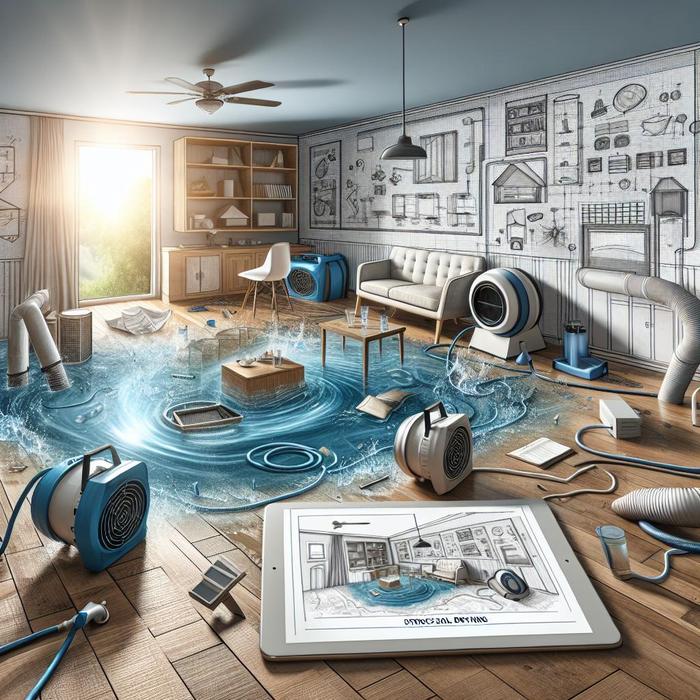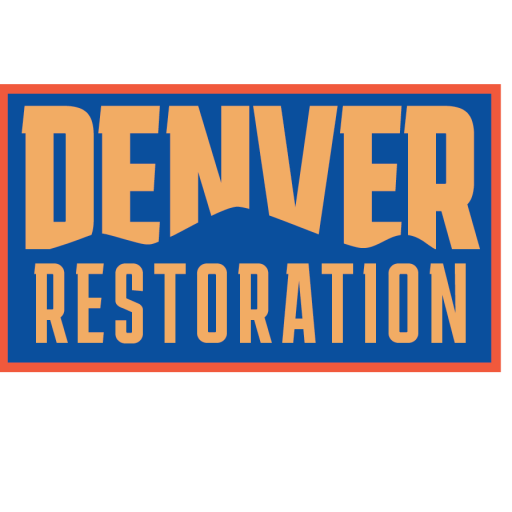Understanding Structural Drying: The First Step Towards Flooding Solutions
An unanticipated flood can lead to catastrophic water damage, compromising the integrity of your property and causing significant financial losses. The key to fast recovery? Efficient structural drying. This process, although complex, is essential for the restoration and revitalization of affected areas.
Understanding the mechanics of this operation is crucial, especially for homeowners, property managers, and business owners. It’s certainly not something one may think of regularly, but in the dire aftermath of a flood, this knowledge can be invaluable in quickly restoring your premises to their original state.
Structural Drying: What Is It and Why Is It Important?
Structural drying refers to the process of eliminating excess moisture from building materials after water incursion. It’s a significant aspect of water damage repair and plays a vital role in preventing further damage such as decay, fungus, and mold growth.
It’s paramount to promptly start this meticulous process, as the longer the moisture lingers, the higher the likelihood of additional complications. Fast and efficient drying can prevent these issues, minimizing the risk of long-term damage and ensuring a swift return to normalcy.
How Structural Drying Works
To comprehend structural drying, one must understand that it’s not just about removing water from the surface. It’s about extracting moisture from the very core of building materials. This involves a meticulously coordinated approach, incorporating advanced techniques and equipment.
Three main principles guide this process:
– Extraction: This involves the physical removal of water using specialized machinery. It’s the fastest way to discard standing water and is crucial for the subsequent steps.
– Evaporation: Post extraction, industrial air movers are employed to turn the remaining visible moisture into vapor.
– Dehumidification: To prevent secondary damage from the evaporated moisture, dehumidification equipment is utilized to take in the humid air and release it as dry, warm air.
Getting the Job Done Right
Although it’s tempting to attempt a DIY solution, water damage restoration is best left to professionals. This expertise is necessary to ensure complete drying and to prevent further complications.
Furthermore, experts can correctly assess and estimate the level of damage and devise a suitable remediation plan. This involves utilizing advanced restoration techniques and equipment effectively, adhering to environmental and health safety standards, and communicating with customers during the entire process.
Mitigating Damage and Safeguarding Health
Well-executed structural drying not only mitigates property damage but also safeguards the health of occupants. Water incursion can cause an explosion of mold growth if not addressed immediately. Exposure to these fungi can lead to a variety of health issues, including allergies and respiratory problems.
A professional mold remediation service can significantly reduce this risk. They have the experience and tools to detect hidden mold, remove it safely, and ensure that your indoor environment is safe. More information about mold remediation can be found here.
Seek Professional Help
A flooding event may be overwhelming and distressing. However, expert assistance can make the situation manageable.
Quick Dry Flood Services is a reputable company in the restoration industry. With a stellar track record, they are well-equipped to handle flooding emergencies efficiently, reducing stress and cutting recovery time.
Understanding Insurance and Legal Compliance
Helping customers navigate through the complex process of insurance claims is another significant aspect of the restoration service. Requirements for damage documentation and policy conditions can be challenging to comprehend, especially during a crisis.
Professional outfits have the necessary understanding of insurance and legal compliance procedures, assisting clients in successfully filing for damage claims. Not only does this ensure financial compensation but also guarantees conformance to local regulations.
The Importance of Customer Communication
Maintaining clear and constant communication with customers throughout the recovery process is critical. This transparency allows customers to be informed about restoration progress and understand the efforts being made to revive their property.
Successfully recovering from a flooding incident requires a combination of fast response, efficient drying, comprehensive damage assessment, and exceptional customer care. Having a competent restoration partner can make a world of difference, ensuring a smooth recovery from the unfortunate event.
The Complex Process of Damage Assessment and Estimation
Damage assessment is the initial step in any water damage restoration process. It is an extensive observation to determine the extent of water damage. The complexity of this task cannot be overstated as it involves assessing not only visible water damage but also potential hidden water damage that could have long-term effects if unaddressed.
Professionals employ advanced damage assessment techniques, leveraging their specialized knowledge to identify the extent and type of water damage. For a complete understanding of what happens during a damage assessment, read here.
Why Quick Response Matters
Flood waters are notoriously fast-acting, seeping into every crevice and causing immediate and lasting damage. In such scenarios, it can be tricky to understand where to start. Every second matter – the sooner the recovery starts, the less damage the property will incur.
A fast response is the key to salvaging as many belongings as possible. It can halt the spread of mold and fungus, minimize additional damage to your property, and importantly, cut your losses. Details about the importance of a quick response can be found here.
Preventing Environmental and Health Hazards: A Critical Outcome
Another essential aspect to consider during a flooding scenario is ensuring environmental and health safety. Wet environments are breeding grounds for bacteria and microorganisms, and the risk can surge in cases of sewage backup.
Molds are ubiquitous in water-logged structures and can adversely affect the health of the occupants if not effectively cleaned. Additionally, persistent dampness can contribute to structural integrity issues, posing a threat to physical safety. Practicing professional intervention is necessary to secure both the premises and the health of people.
Conceptualizing Restoration: An Overview
Restoration after flooding is by no means an easy affair. It involves salvaging and drying out the premises, remediating mold growth, cleaning and deodorizing, and finally, restoring the property to its pre-damage condition.
This restoration process requires carefully planned and executed measures to minimize disruption while maintaining efficiency. For detailed information about the process, check here.
Maximum Restoration with Minimum Disruption
In a damage restoration process, skilled professionals work towards delivering maximum restoration with minimum disruption to your life or business. Identifying and employing the right restoration strategy and equipment are critical in achieving this delicate balance. Today, modern restoration techniques and equipment are designed to be efficient and minimally invasive.
Restoring Your Basement: An Essential Step Towards Recovery
Basements are often the primary victims of water and flood damage. They are also prone to increased risks of mold and mildew growth due to natural dampness and poor ventilation.
Professional water damage restoration teams consider the extent of flooding, the duration of the water’s presence, and other variables to build an effective strategy for a basement’s recovery. More about the finer details of basement flooding and its consequences may be found here.
Smoke and Fire Damage Restoration
Restoration is not merely about water damage. Fires can induce smoke and soot damage, leaving lasting and pervasive damage if not addressed correctly. Expert fire damage restoration involves soot and smoke cleanup, damage repairs, and measures to prevent future incidents. The entire fire damage restoration process can be reviewed in detail at this link.
Mold and Mildew: Silent Invaders
It isn’t just about obvious damage. Damp spaces could also encourage the growth of mold and mildew, which might not be instantly perceptible. Professional inspectors can detect, contain, and clean mold formations. The decrypted science behind intrusive mold may be discovered at here.
The Need for Health and Safety Measures
Restoration endeavors need to adhere to prescribed health and safety standards to guarantee the safety of occupants and professionals. These include wearing protective gear, maintaining ventilation, and ensuring the structural integrity of the building.
Common Misconceptions About Damage Restoration
Misunderstandings abound when it comes to damage restoration. Many people unwittingly equate drying with restoration or presume that a visibly restored space is wholly safe and structurally sound. However, proper restoration involves in-depth cleanup and drying, thorough inspections, and internal repairs. More about these misconceptions can be found here.
While a flood or any other form of water or fire damage can be overwhelming, knowing the much-needed role of experts and understanding the damage restoration process can ease some stress. Adhering to these processes can ensure that your property is restored efficiently and professionally to its previous state, alleviating strains gradually from the unfortunate event.

